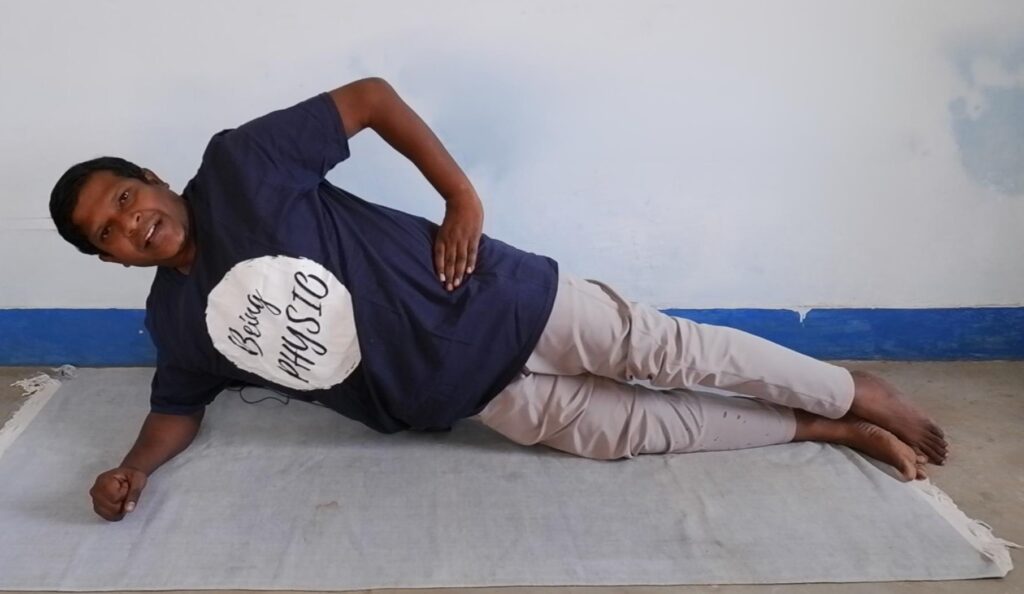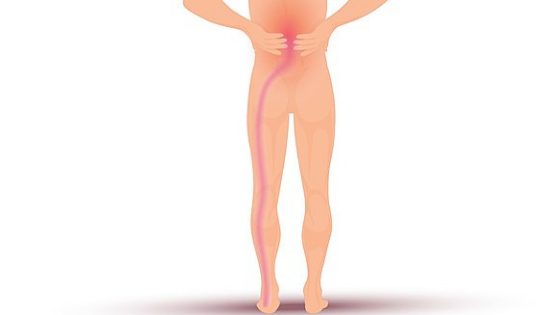Last updated on June 2nd, 2024 at 06:41 pm

If your healthcare provider recently told you that you have a disc bulge or disc hernia, you’ve probably been advised to avoid bending forward and lifting heavy weights.
This is because lifting weights and bending forward in the lumbar disc bulge exaggerate the pain and symptoms. In this article, we will learn why your doctor instructs you so and the scientific reasoning behind this advice.
What is Lumbar Disc Bulge and Why It Matters
To understand why avoiding forward bending is crucial, let’s first understand what an intervertebral disc bulge is.
- Our spine comprises a series of vertebrae, and between each pair of vertebrae lies a disc-shaped, soft tissue structure known as an intervertebral disc.
- The intervertebral discs act as cushions between the vertebrae, providing flexibility and support to the spine. These discs play a vital role in enabling our body’s flexibility, allowing us to bend, twist, and move freely.
- This flexibility is possible because the intervertebral discs act as shock absorbers, maintaining our spine’s suppleness.
- However, when a disc is compromised, such as in the case of a bulge or herniation, it can lead to a host of painful symptoms, including radiating pain down the leg, known as sciatica.
- The severity of pain and other symptoms depends on the degree of disc herniation. The disc herniation has 4 stages the 4th stage being most severe.
Why Forward Bending is Bad for Disc Bulge
Why do healthcare professionals advise against lifting heavy objects or bending forward when you have a disc issue?
Lifting Heavy Objects:
- When you lift a heavy object, the spine is subjected to increased stress and strain. This stress can be detrimental in the presence of a disc issue.
- However, in a normal individual, the disc can easily withstand this pressure, which is why we can perform many heavy-lifting tasks without any problems.
- But, if someone is suffering from a lumbar disc hernia, the additional pressure from lifting heavy objects can cause the already bulging or herniated disc to worsen.
- It’s like pressing down on a water balloon; it squeezes the gel-like material in the disc towards the sensitive sciatic nerve. This can intensify the pain and discomfort associated with disc problems.
- Therefore, it’s highly advisable to avoid lifting heavy objects to prevent further damage and pain.
Forward Bending:

- Bending forward, whether to tie your shoelaces or pick up an item from the floor, significantly impacts the position of the intervertebral discs. In a healthy spine, this movement is manageable because the discs can withstand the pressure.
- However, bending forward can exacerbate disc herniation.
- As you lean forward, the herniated gel-like material within the disc is pushed backwards.
- This can increase compression on the already affected nerve, intensifying the pain and radiating symptoms like sciatica.
- Therefore, individuals with a disc herniation are advised to avoid forward bending to minimize nerve compression and discomfort.
In summary, the rationale behind avoiding heavy lifting and forward bending when you have a disc issue is to protect the compromised disc and the nerves around it. These activities can worsen the condition, increase pain, and hinder the natural healing process.
How Therapeutic Exercises Can Help Disc Bulge
In physical therapy, we employ exercises specifically designed to address these issues without compromising your spine’s integrity. These exercises typically involve bending backwards, a technique known as extension-biased exercises.
By incorporating these exercises into your routine, the bulging disc gradually returns to its proper place. As a result, you’ll experience relief from lower back pain and associated symptoms.
In addition to this, you must also learn the exercises to avoid in lumbar disc bulge.
Best Posture to Avoid Disc Bulge
So, if bending forward can aggravate your disc bulge and increase sciatica pain, you must follow a safe posture to perform activities that involve bending over.
One of the frequent activities is picking up things from the floor, which involves bending over. However, with a simple modification, we can make this task safer for a disc bulge patient.
To accomplish this task safely, instead of bending at the lower back, we can bend at the knee and lower ourselves to the floor and pick up things.
If you have a desk job, you must follow the ergonomic way of sitting on the desk. Your proper way of sleeping in bed also affects how fast you recover from sciatica including getting in to and out of bed safely in back pain.
The author is a physiotherapist who has been practising for the last 17 years. He holds a Bachelor's in Physiotherapy (BPT) from SVNIRTAR (Swami Vivekananda National Institute of Rehabilitation and Research), one of the prestigious physiotherapy schools in India.
Whatever he learns dealing with his patient, he shares it with the world through blogs and e-books. He also owns a YouTube channel, "Sunit Physiotherapist" with over 8 lakh active subscribers. Here, he shares everything he gets to learn serving the patient.




